Words by Megan Walberg of @CupSwitch; Introduction + edits by Chloe Pingeon
Want to do your part to reduce plastic waste usage?
Then you’ll want to follow Megan Walberg, founder of @CupSwitch.
On her educational and highly entertaining Instagram channel, she creates content that helps makes it easier to hop on the reusables train.
Her mission:
To help curb plastic pollution in the ocean and on land, reduce disposable coffee cup usage and provide future generations a clean earth to live on.
Through entertaining images and videos — many of which feature Megan dancing with reusable bottles — she documents “plading” adventures.
What’s plading?
It’s rollerblading while picking up waste — a fun twist on the “plogging” trend of picking up litter while jogging.
The Epicure & Culture team sat down with Megan to learn more about what inspires her creative content, and how we can all take simple steps toward waste reduction in our own lives.
Psst! Don’t forget to pin this post for later!
1. What was your inspiration for starting @CupSwitch?
I was ready to do something that made me happy in life.
I quit my job as a research scientist in neuroscience at Oxford University and moved to NYC to pursue something that I’ve long felt needed a revamp in our thinking:
Waste!
There’s so much that’s wasted in the world and it doesn’t have to be like that.
I started blogging at BYO*ToGo when I came to New York, focusing on sustainability in coffee shops.
One of the most consistent things I noticed:
People were sitting down drinking out of disposable cups.
First off, that is a double expense for coffee shops, as they pay for inventory and the amount of trash they produce.
Second, so much effort goes into coffee production, from finding the perfect altitude, soil, and climate, to ensuring social responsibility — like fair wages and working conditions of farmers.
Then here we are drinking this “black gold” from a paper or plastic cup.
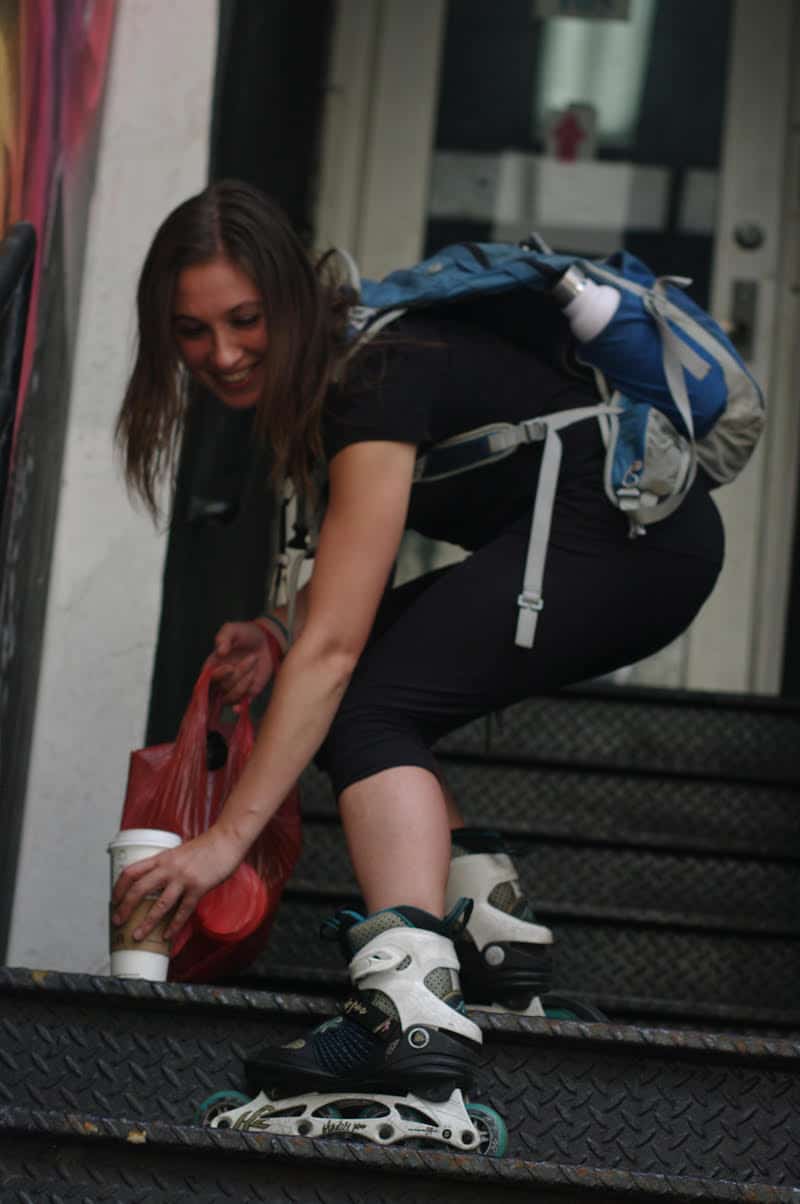
People:
Sit down and enjoy or bring your reusable to enjoy it later!
Sorry, had to go on that rant.
After what I observed in coffee shops and learning how New York City is trying to be zero waste by 2030 (OneNYC 0x30) — a goal few people know about — I realized a mass change or “switch” in our perspective was needed.
New York is aiming to be 0 waste by 2030, but this won't happen on its own. Help this mission by reducing your own waste and following the initiatives of @CupSwitch Click To TweetIf NYC wants to be zero waste, its citizens need to be educated about waste reduction.
Instead of saying go “zero waste” — a loaded, unclear term — give people a tangible solution.
According to several municipal reports, disposable cups make up approximately 25% of waste in public spaces.
Think trash bins and litter.
So, if we all switched to reusable cups — like bringing a stainless steel travel mug to your coffee shop and asking the barista to pour your drink in there, which is not a city health code violation — we would reduce a quarter of all our waste sent to landfill.
Crazy, right?
I’ve become hypersensitive to waste — especially disposable cups.
It’s like a switch that is turned on; once you see it, you don’t unsee it.
That is the idea behind my brand name, helping to turn on the switch.
With that perspective, naturally, there is a motivation to take action, which leads to a switch in behavior.
This could be using a reusable cup and bottle, as well as other things, like reusable bags and containers, refusing plastic straws, and more.
The switch to a more sustainable lifestyle is also part of a larger “movement” of caring and taking back our power as people.
We all have the ability to make a difference.
This is especially true if we work together, and stop waiting for others to do it.
We can — right here and now — make a change.
We as people deserve to live in a clean, safe environment, as do our children and future generations.

2. For people who don’t understand the concept of “plade’n,” can you define it?
As for the plade’n — picking up litter while blading — this started when someone asked me what I did after I took photos of disposable cups.
I realized, “Wow, I’m just leaving them there when I could be throwing them out — keeping in mind paper cups are lined with plastic so are not recyclable in most places— and helping to clean up.”
My mode of transportation is rollerblading, so most of the times I would be taking pictures on the blades and then picking up the cups.
There is this thing called “plogging” — picking up litter while jogging — that is an actual thing (Google it!).
You make have heard of #plogging (picking up trash while jogging), but have you heard of #plading? Read about it here Click To TweetSo, I thought to myself, “Well, I kind of plog, but I’m on my blades…PLADING.”
That’s literally how the term came to me.
Once I started picking up cups, I was noticing other plastics — like water bottles — that can be recycled.
From there I figured I’d snag those too, and it all went downhill from there.
I usually have a reusable bag I put the plade collection in or use some plastic bag I find en route.
I recycle the plastics in public bins, at my place, and/or give them to people called “canners” who make money from collecting plastic, glass, and metal and bottles (there’s a bottle deposit system in New York).
I’m well aware that my plade excursions are not gonna clean cUP (ha!) the city, but it is bringing an awareness to the amount of waste we have.
You feel it viscerally, and when you start to pick up, you have more of an incentive not to litter in the first place and find alternatives to creating waste — like using reusables.
This whole experience is fulfilling and brought me the most happiness I’ve experienced in my life.
I found something that gives me purpose, helping and believing in mankind, working to make this world a better place, bringing back human connection and cooperation, humility, and importantly love and respect for myself, others, and our planet.
3. What are some of the craziest pieces of trash you’ve picked up, and where?
I’ve adopted the Williamsburg Bridge — keeper of the bridge, ha! — and clean there a lot.
I found a big plant pot just chillin’ half way up the bridge.
Oh, there was also this huge piece of plastic wrap so we did a rescue, had some commentary on that and did a follow-up phone call.
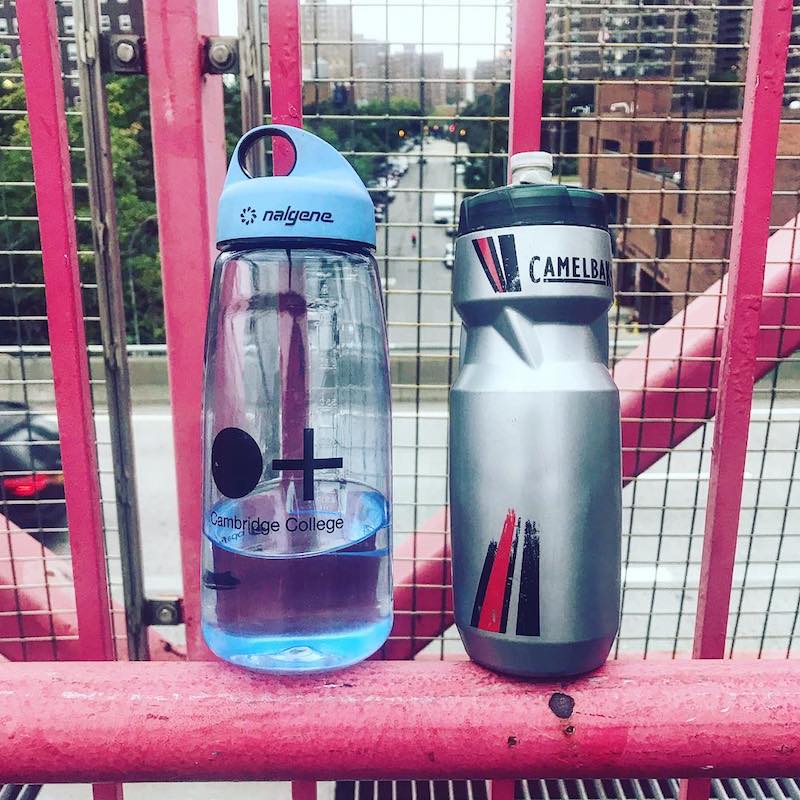
4. What is the most common kind of trash you end up picking up?
Besides disposable cups — my main focus — there’s a ton of plastic water bottle caps, straws (unopened too…rant!), and cigaret packets (*cough* Newport).
5. What are a few simple ways to reduce plastic use?
Focus on one thing!
Habits take time to change and form.
I suggest reusable cups because if we all did that, we would cut a quarter of waste that goes to landfill — and into our oceans!
Reusable water bottles (like this one) and bags (like this one) are other great items to start with.
You need to make it part of your routine; like when you leave the house you make sure you got your keys, wallet, phone, and cup.
It may feel bulky, but you can think of this one act as a “thank you” to our planet.
If someone provided everything you needed — food, water, air, material for shelter and more — without expectation, why would you throw litter at them and compromise their ability to provide by continually using single-use plastics?
Be kind to and forgiving of yourself if you end up using single-use plastics on occasion.
It’s not worth beating yourself cUP (ha!)!
Your happiness and mental state is a priority.
Know you’re making an effort. That’s what counts.
Did you know you can save money by bringing your own cups to coffee shops? This is just one of the many advantages of making #sustainable choices that help the #planet. Click To TweetIf you’re an avid coffee drinker, you are also going to save money.
Many coffee shops offer a discount for bringing your reusable. Check out my Instagram story highlight “BYO $ off drink” for places I’ve visited in NYC that offer discounts.
Don’t be afraid to ask the barista for them to fill up in your cup and if they offer a discount.
You’re saving the store money and you’re making an effort to look after our home:
Earth.
6. Do you have any favorite influencers creating content around reducing plastic waste and promoting reuseables?
For other tips and ideas, do a search social media for bloggers and hashtags like #zerowaste or #plasticfree .
On Instagram, I like @mama.eco because she has great engagement with her followers — responding to comments and messages — and offers practical solutions to cut down on waste.
There are also popular zero waste bloggers like @trashisfortossers and @zerowastehome that may be helpful, and people in NYC might like to check out @greenyc and @grownyc.

7. Many people know the environmental threat of disposable plastic items like plastic water bottles and straws, but are there any other regularly-used items people may be unaware are causing harm?
Microfibers!
These are tiny pieces of fibers that come from your clothing (synthetic materials) when you wash them.
They are too small to be filtered, and therefore end up in our waters and the ocean, causing problems for marine life and the environment.
Here’s an article for peeps to learn more and what you can do to reduce them.
Also, disposable paper cups.
There’s a big misconception that because they are paper, they can be recycled.
In most cases, they cannot.
Mainstream paper cups are lined with a thin layer of plastic (polyethylene) requiring a complicated separation process standard recycling plants are not equipped for.
The plastic from these cups have the same potential negative impact as other plastics — they last for years, breaking down into “microplastics” (fragments of plastic less than 5 mm) that can be ingested by land and marine animals.
Although there are mixed opinions, it is said that thin plastic lining is not “harmful” in the manufacturing process, but harmful chemicals (e.g., butane, benzene, and vinyl acetate) are used and gaseous emissions are created.
8. What would you tell someone interested in living a more eco-conscious lifestyle, but who thought it was too difficult?
Focus on one thing.
Even a single action — like bringing your own coffee cup — adds up over time.
Consider this math:
1 coffee x 365 x the rest of the years your life.
Once you start building a habit, your action becomes second nature and implementing other waste reduction strategies— like carrying a reusable bag, bottle, container, composting — seem less intimidating.
Most importantly, be compassionate with yourself if you slip up.
It is the effort and intention that counts.
9. When traveling to destinations where tap water isn’t available, how do you avoid buying plastic bottles?
I’d recommend investing in a camping water filter.
When traveling, you should invest in the environmentally friendly option of #waterfilters rather than purchasing plastic bottles that harm the planet. Read this interview for more tips Click To TweetThere’s a range out there that are suitable for different situations and budgets.
A few popular options include:
10. What are some common eco-mistakes people make while traveling, and how can they overcome them?
I prefer not to use the term “mistake” because a lot of what this boils down to is lack of education.
When people are informed and understand the reasons behind something, they are more likely to make eco-friendly choices.
On that note:
I can again recommend a reusable cup or bottle.
You’re not at home — so will likely be eating some meals out; and even if you’re at a hotel, sometimes they have coffee/water for you but only offer single-use cups.
I traveled with my Cup Switch stainless steel reusable cup recently to Central America and ended up using it as a container because it was insulated, it kept my food (watermelon).
Other things you can do for eco-friendly travel are:
- Bring a container to put your leftovers in
- Shop at the local markets
- Bring a reusable bag
- Use eco-friendly/biodegradable products
11. Do you have any favorite reusable products to reduce plastic waste?
Klean Kanteen is pretty solid, and they have a reusable canister that is leak proof.
#KleanKanteen is one example of a great #sustainable #reusable mug brand. Read this interview with the founder of @CupSwitch to read about more #sustainability tips Click To TweetI love this because it won’t leak in my bag when I’m plade’n!
A few of their bottles:
- Classic Stainless Steel Bottle
- Double Vaccum-Sealed Bottle With Leak-Proof Cap (in pretty seafoam color!)
- Stainless Steel Coffee Container
12. Can you share a few links to some of your fan favorite videos?
Thanks so much!
My favorite part of this Cup Switch thing is connecting with others.
Here some dope moments I’ve had:
If you’re interested in implementing waste reduction techniques in your own life, following along @CupSwitch is a great place to start.
Switching to reusable coffee cups is one of the easiest ways to reduce waste, and visiting Megan’s platform is an entertaining way to educate yourself on how to make eco-friendly switches.
Any tips to help people reduce plastic waste and adopt reusables that you’d like to add? Please share in the comments below!
Enjoyed this article? Pin it!
Jessica Festa
Latest posts by Jessica Festa (see all)
- A Culturally-Immersive Adventure In Mongolia’s Altai Mountains - Jul 8, 2023
- This Recipe Sharing Platform Supports Women In The Culinary Industry (Labneh Recipe Included!) - Nov 5, 2020
- Hiking The Mohare Danda Community Eco-Trek In Nepal - Jun 3, 2020
- 6 Important Questions For Choosing A Responsible Yoga Retreat - May 18, 2020
- How To Create & Grow A Profitable Blogging Business (Ethically) - Jan 18, 2020

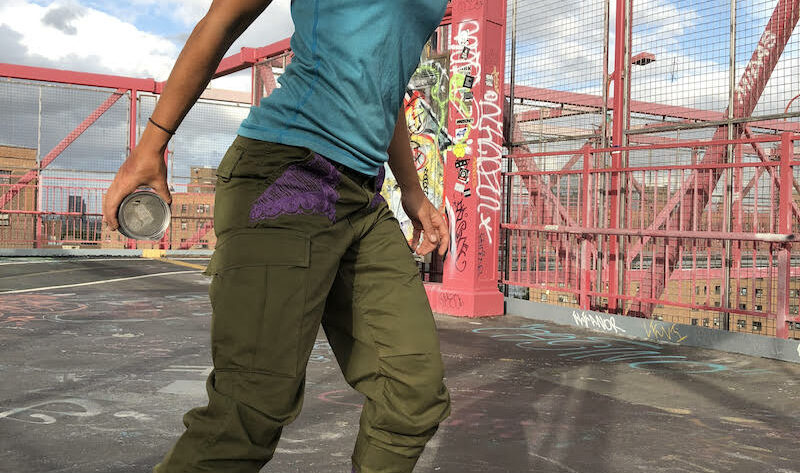

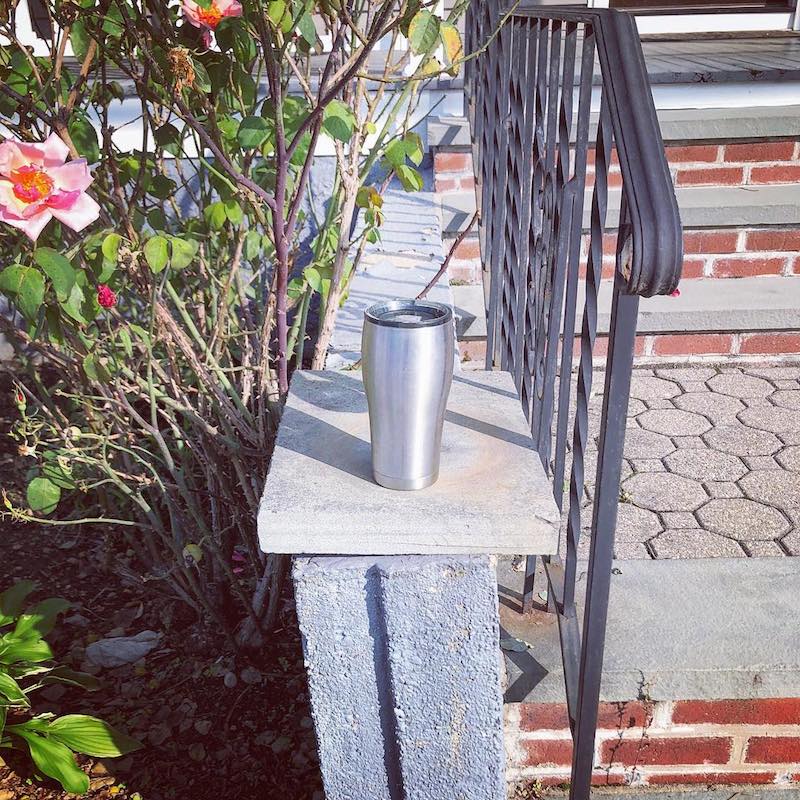
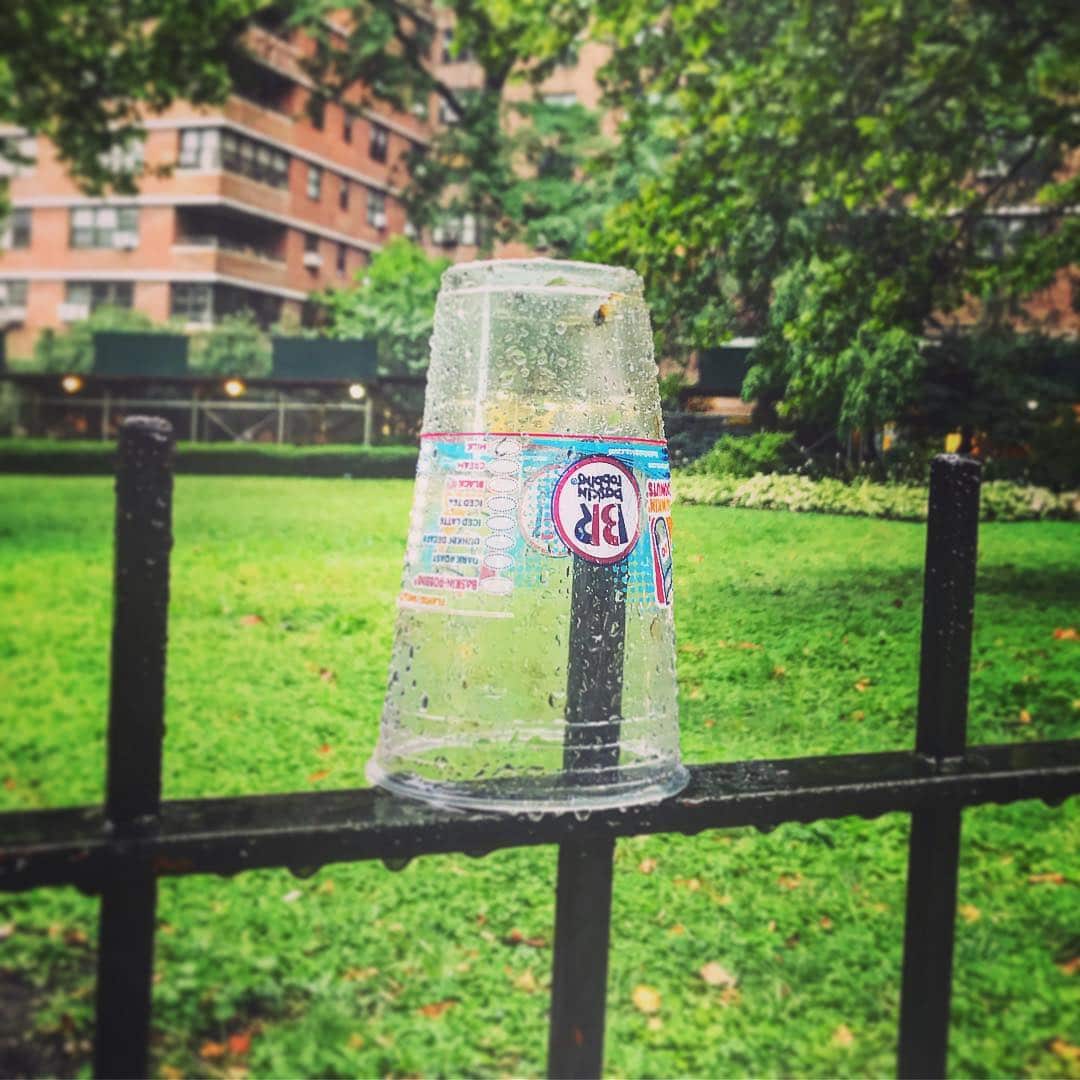
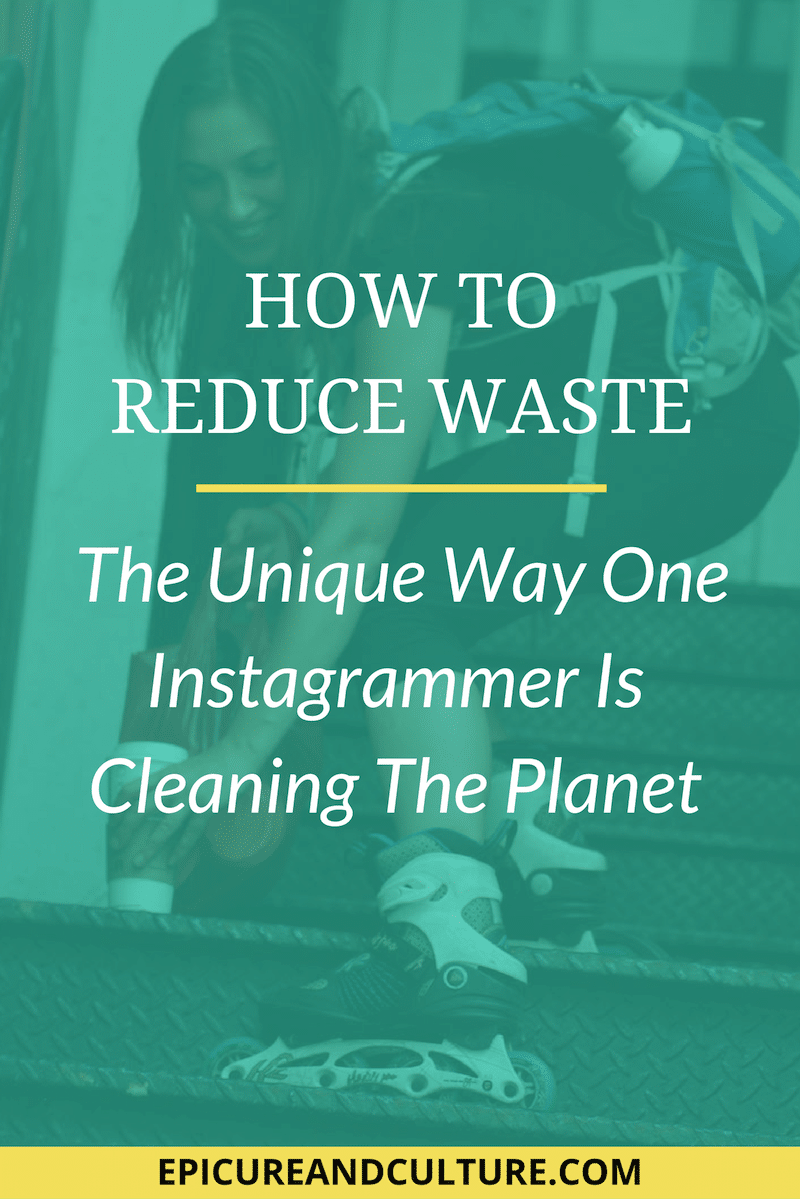




Nice post, Thank you for sharing with us.
MojoHeadz label https://www.instagram.com/mojoheadzrec/ When it comes to underground house music, Mojoheadz rcords has pumped out material at an incredible rate. If you’re looking to discover the past, current and future talent of house music, look no further than mojoheadz.Check it out review!!!
See how Robot makes $1000 from $1 of investment.
Link – https://bitmoneylab.de/deposit-iq-option-bitcoin.php
Thanks for sharing this fantastic Article, really very informative. Your writing skill is very good, you must keep writing this type of Article.
Thank you for writinng this post. You can check more about Minerals and Resources
Thank you for sharing! Sustainability is the thing that everyone should care about today.
Thanks for sharing this post! Let’s care for the earth.
great topics thanks
I count myself lucky to live in Taiwan, here we actually recycle everything!
Thanks for sharing! What great ideas
This really opened my mind about recycling
First time I am hearing the term pladin’ such a nice concept I will be doing the same on my skateboard from now on!
Going Green is the only way to save earth! Thank you for sharing indeed. Let’s do it for our children!
Your information is very great. I always deal with such blogs.